#Which spinach grows best in Kenya?
Explore tagged Tumblr posts
Text
Hakuna Matataland
I was never particularly tempted by Africa, thinking it’s just a desert with little food and little to see. Nothing of that turned true – variety of landscapes, comfortable temperature, numerous animals, friendly locals and clean public spaces can satisfy even the most critical tourist.
Honza tricked me into a holiday in Tanzania by showing the pictures of Zanzibar’s sandy beaches:
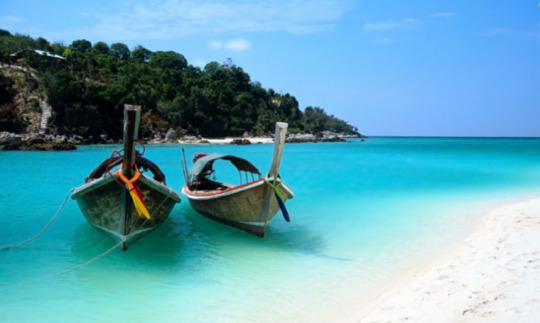
Can one say no? :) As a compromise, we decided to spend a week on the continental part for a safari, and then chill in Zanzibar for another week – which I would say is the perfect mix for a comprehensive holiday.
After few hard months at work, we both just slept through the 14 hours of flight with a quick lunch in Istanbul, and woke up in Dar es Salaam - the former capital and largest city in Tanzania. Over the last century, Dar es Salaam has grown from a sleepy fishing village into a metropolis of over four million people. Straddling some of the most important sea routes in the world, it is East Africa’s second-busiest port and Tanzania’s commercial hub. Despite this, and its notorious traffic jams, the city has managed to maintain a low-key down-to-earth feel.
We stayed at the local Backpacker’s hostel owned by a distant acquaintance of ours, who did a city tour for us. It was pretty much just about walking around in a crowded slum-like city center, sweating at every step. The highlight was a metro trip (metro meaning bus run on tracks) and a visit to the local fish market. Boiling hot and rich in smells, it is divided into two main sections, with fresh and less-fresh fried fish sold to the local shoppers and restaurants.
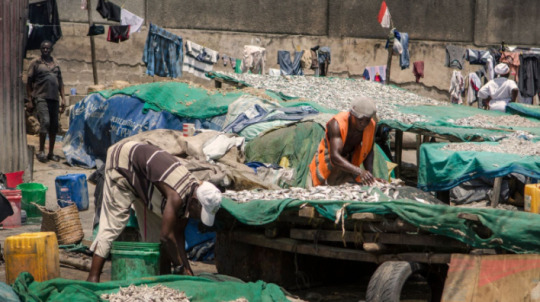
Luckily, we escaped from Dar just after a day, and flew to Arusha, the gateway to the popular Northern Safari Circuit. Nested at the foot of Mount Meru (the view on which we enjoyed from the terrace of our guesthouse with a glass of wine), it is a lush green town as opposed to the dirty Dar. From some points of the area, you could even (theoretically) see Kilimanjaro - but it was always hiding in the clouds.

Here, we had a local buddy called Colman, who helped us book the safari, took us to the dinner with his friends and organized a trip to the Hot Springs (also with five of his friends). This is a fantastic oasis in the middle of nowhere. The term "Hot" in hot spring is used quite loosely though - the water was warm at best, but very clean. The fishes munch at the feet all over, just like at the Thai massage places. There is a swinging rope to either embarrass yourself (me) or show off your monkey skills (Honza), and a little stall with suspicious yet nutritious French fries omelet.

Next day, we took off for the adventure! The first destination was Tarangire National Park in northern Tanzania. Hump-backed wildebeest, kongoni with long ears and short horns reminiscent of a samurai headdress, hulking buffalo, buxom zebra, delicate gazelles, watchful eland, ostrich outriders, fringe-eared oryx and an array of predators move in and out of the park in different directions at different times. Starting with happy shouting when we see one lonely animal here and there, we were soon used to the herds of zebras and the whole elephant families gathering in central riverbeds. One more amazing sight were the giant baobab trees, medusa-headed monoliths often thousands of years old, making the scenery picturesque.
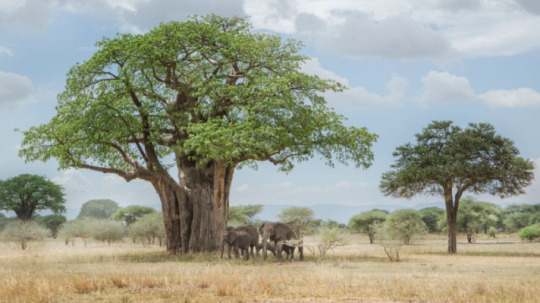

The first night out was in an African igloo at Panorama lodge. It has a stunning view on the savanna, and a storm was coming around in the evening. We enjoyed a dinner cooked by the group’s chef, scaring the lizards away from our plates.
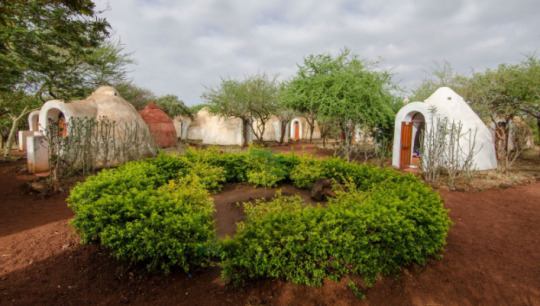
We were in a group of five: two of us, a hot 40-y.o. American, and two German-Italian guys, in an indestructible Land Rover Defender, led by an amazingly calm guide Abdul, who’s been doing this for over 15 years. His personal lifetime safary experience was when a family of lions were passing through the camp and a baby got stuck in his tent, crying for mommy’s help. Abdul also helped me get my own personal lifetime experience of getting out of the jeep to pee in the middle of the savanna (strictly prohibited and deadly) few kms away from the lions.


The next park was THE Serengeti. With nature ranging from apparently limitless grass plains in the south, fertilized by volcanic ash, to wooded highlands in the east, crossed by rivers, it is a home to hundreds of inhabitants.
Among them, the principal actors are blue wildebeest and their spectacular annual Great Migration, “The Greatest Show Of The Natural World”, during which they trek in circumambulation for 3200 kilometers from northern Tanzania to south-western Kenya and back again. In turn, their trips affects other creatures: lions, jackals, hyenas, leopards and cheetahs prey on the migrating and resident herds. Vultures subsist on the predators’ leavings.
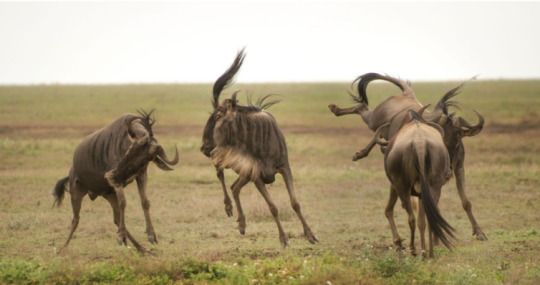
The herds of zebras were mainly turning their butts on us, but still were magical. Over the course of the safari, the amount of zebras around us was growing exponentially, until on the last night in Ngorongoro camp our tents were surrounded by them, walking between the tents. This was quite nice, as opposed to SImba camp in Ngorongoro, with hyenas swinging around and laughing right in your ear at night.

Ngorongoro is a park located in a volcano crater, with the diameter of over 20 km. This is a whole magical world, with own ecosystem, salty lakes, humid jungle forests and green swamps. The camp was based on the top of it, and at dawn we were descending for about 2 kms down on a dusty narrow road, speechless from the views unfolding ahead of us.
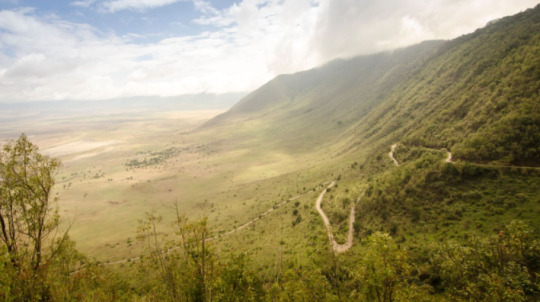
We’ve seen graceful flamingos, supposedly pink because of the shrimps they eat.
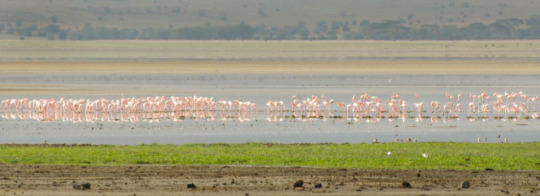
The swamps were full of grey dirty rocks that turned out to be sleepy hippos, nocturnal thus not giving a damn about the birds jumping all over them.

As for me, if you just have one day, Ngorongoro is the most magical place to see on the mainland.
Tired and dusty, we returned to Arusha to fly to Zanzibar on the next morning. Local airlines are truly a miracle, where ‘hakuna matata’ principle rules over any regulations. The boarding passes are issued in handwriting, and our surnames were (understandably) way too difficult for the check-in guy – so we ended up with two pieces of paper stating ‘Jan’ and ‘Daria’, and a delay of just two hours.

The plane had about 10 seats, so it’s almost as if you had a luxury private jet. By the way, there’re at least three different airlines, with ticket price varying from roughly 70 to 370$ for the same route – we dared to go with the cheapest and it was absolutely fine.
Zanzibar lies on the east coast of Africa, and the name officially refers to the archipelago that includes Unguja and Pemba, surrounded by about 50 smaller ones. As we were explained, when mere silly Europeans say ‘Zanzibar’, they usually refer to the Island of Unguja, separated from mainland Tanzania by a shallow channel 37 km across at its narrowest point.

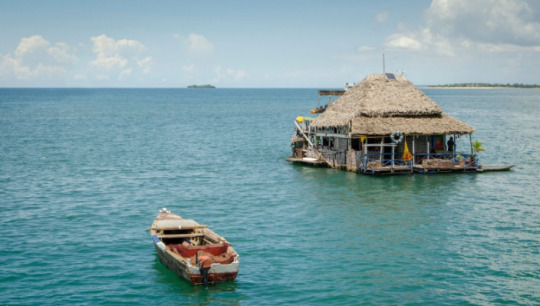
Zanzibaris have a long history of religious tolerance and although the islands are 95% Muslim, alcohol and tobacco are available (if you search for it: not in every hotel, but pretty much in every bar). The tourists are many, and they are requested to show consideration for the Zanzibari culture by wearing long skirts/pants and covering the shoulders.
For many centuries there was intense seaborne trading activity between Asia and Africa, and Zanzibar was a key African port, hosting and blending the culture of Germans, Indians and Omanis. It used to be a colony of Oman for quite a while, and has become an official part of Tanzania quite recently, in 20th century. The name of the country itself is actually made up from two words: ‘Tanganyika’, the name of the continental part, and ‘Zanzibar’.
Zanzibar has great symbolic importance in the suppression of slavery, since it was one of the main slave-trading ports in East Africa. Interestingly, the majority of slaves were female concubines, whose children had full inheritance rights, same as the marital children of the master family. After a concubine gave master a child, it was impossible to sell either – which I can imagine resulted in an interesting blend of relationships and a blurred perception of social stratification.
The last but not the least important historical fact is that their beloved Princess Salme, who published an extensive memoir on her life in Zanzibar, looked like Putin. So we bonded with the locals immediately.

The capital and the main port is Stone Town, home of Freddy Mercury (Muslim locals do not seem especially proud of it, though).
The historic center is essentially a labyrinth of narrow winding streets, all leading to the sea cost, where local children play and swim right between the boats.
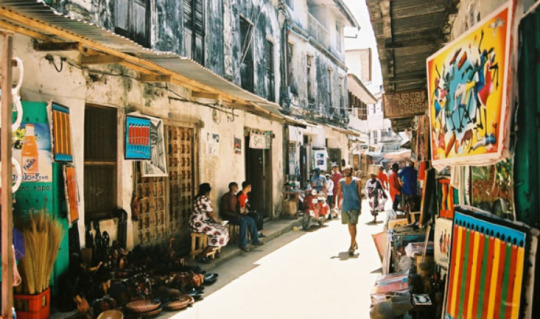
The city has a very calm vibe, and for the first time in Tanzania I felt truly comfortable and relaxed strolling around. One drawback is that obviously the prices are rather European – but fresh juices and local foods are worth it.
Zanzibar is sometimes called ‘the Spice Island’, as the agriculture is focused on growing spices. We decided to explore on of the local spice farms. Turns out, pretty much everything we know - cloves, cinnamon, nutmeg, vanilla, cardamom – grows on trees and bushes. Africans do not really use much spices for food, which is rather flat in terms of taste – but their traditional medicine is all about spices. Eating cumin powder helps with ‘running stomach’ (tested, proven personally), nutmeg gives women ‘romantic eyes’ and enhances men’s power (according to an alternative source, it can keep you high for up to 24 hours), and eating henna roots that cause internal bleeding has been an abortion solution for the most conservative Muslim communities for centuries.
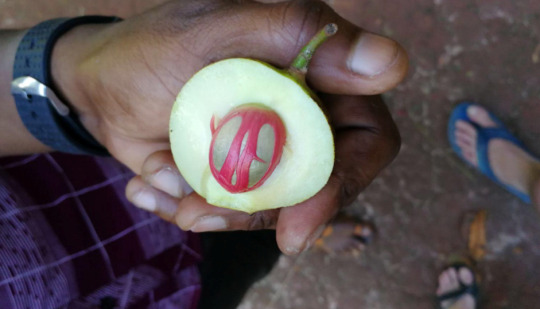
After the farm tour, we did a local cooking class – fish curry, spinach mash and coconut milk dumplings with cardamom, all cooked right on the floor and eaten mostly by the local village kids attracted by the smell. If we did not see that fish on the local market, I suspect we might’ve enjoyed it more. But the dumplings were dope, and burnt cane sugar with cardamom is something you should all try!

After Stone Town, we headed to the north-east of the island for beaches and dives. Our first stop for few days was Kiwengwa, which, funnily enough, turned out to be an Italian enclave. Somehow the first tourists that started coming to Zanzibar about 10 years ago were Italians, and all the locals started learning the language. More than a half of the beach cafes were serving pizza, pasta and Prosecco (not that I mind!), and local kids were chasing us on the beach shouting ‘Ciao bella’. The beach souvenir stalls with coconut carvings and textile bags had the proud names like ‘Dolce & Gabanna” and “Fendi”.
The sea life was absolutely stunning. We skipped the crowded dolphin-chasing tours and went diving and snorkeling to the tiny neighboring islands. My personal favorite was a trumpet fish:
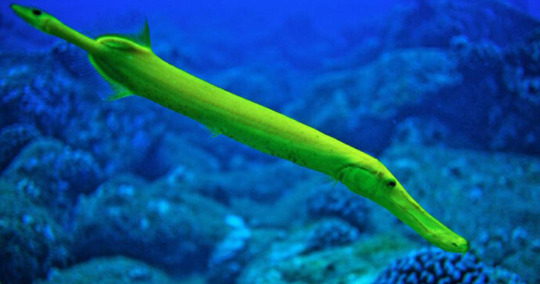
And apart from that, there was absolutely nothing to do in the north-east, as there was no wind and no waves. I was counting with sunbathing all day long, however, the tan plan was usually fulfilled in the first 15 minutes at the beach, even with SPF 50: African sun is truly severe. Chilling in the shadow of hotel terrace was complicated by the hardworking waiters, who came every 10 minutes with a call-center dialogue script: “-Hello! -…. ‘How are you?’ ‘… ‘How is your day?’ … ‘Is everything okay?’… ‘Would you like something else?’ ‘… and a killer follow-up ‘Why not?’. When once I dared not to order a drink, one of the waiters literally chuckled, loudly expressing her contempt for my refusal to support the local economy.
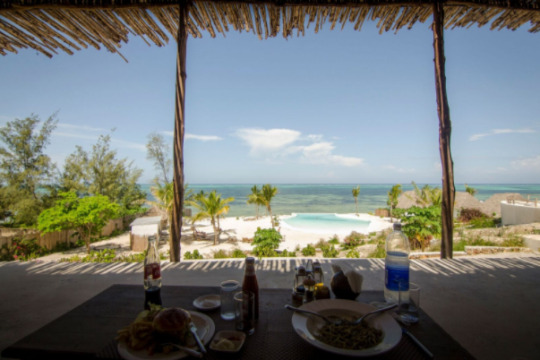
After three days, we ran away to Paje, a more democratic party village on the east coast. There was a tiny bit of wind, still not enough for surfing but sufficient for trying out a kite. This kept Honza busy for another two days, while I was swallowing Agatha Christie’s novel in batches. A sport that needs independent coordination of legs and hands did not look very promising for me. And the beaches were just amazing 24/7.

When it was time to go home, we took a ferry from Stone Town to Dar – and despite many negative reviews, I would recommend it to everyone. Reasonably priced (35$), big, clean and air conditioned, it reaches Dar in just about 2 hours – and then you can uber to the airport. Just be aware that local drivers aren‘t big believers in driving after they accept the order – they usually just stay where they are, apparently waiting for you to come to them. It took us just half an hour with 2 phones to actually get a car – but it was about 30 times cheaper than a taxi for an hour’s drive.
A lonely plastic pine tree in the departure hall reminded us that we’re flying back for snow and Christmas. This is nothing personal for Africa, but it was amazing to be back, with the reliable electricity supply, drinkable tap water and no need to bargain over everything.
Some of the practical tips:
· Essential vaccinations are just two – typhus ans yellow fever, but you must have a vaccination certificate for border crossing.
· If customs officers go away for half an hour with all your documents – hakuna matata. Sooner or later they’ll come back, and even if you end up with few local loans on your name, the notifications are not likely to arrive overseas.
· Mosquito net was available everywhere we stayed, but we still took one with us just in case. You’ll be bitten anyway, even with the net and repellent – but the levels of malaria are very high on the continental part.
· If you take Malarone in the evenings together with red wine, your dreams will be vivid and complex.
· If going in the low season as we did, you should definitely book a safari right on the spot in Arusha. This is more than twice cheaper than booking online in advance, and options are plenty. I’ll be happy to refer our local buddy to you :)
· Make sure you go to the bathroom before sleep when you stay in safari camps to avoid unpleasant meeting with hyenas. Same stands for game drives, when you are technically not allowed to leave the car. Skipping on this results in the scariest two minutes of your life, especially if someone in the crew decided to fool you shouting „Look, lion is coming!“ while you’re out.
· By law visitors have to settle bills in US dollars rather than shillings, but no one really cares. It;s best to bring USD and withdraw some local currency just in case. When paying in USD, you can (should) bargain over the exhange rate!
· As usual – avoid raw foods, veggies and fruit that you do not peel yourself, and make sure your water bottles are sealed. Valid even for the five-star hotels. If anything, chew cumin.
· Chat with the locals, smile and hakuna matata! Once you let it all go, Africa is amazing!
2 notes
·
View notes
Text
Zanzibar in the Rain – The New York Times
If my circumstances had not been so dire — or rather, if my circumstances had been drier — I might never have found myself at the Zanzibar Curio Shop.
At first glance, the store did little to distinguish itself from other trinket purveyors besieging the tangled lanes of Stone Town, the historic quarter on the coast of Unguja, Zanzibar’s main island: “Hakuna Matata” T-shirts obscured the facade and tourists browsed souvenirs. In any other city, I’d breeze past. But sodden from the fury of a downpour, feigning interest in refrigerator magnets seemed a small price to pay for shelter.
“If you want to see the real history of Zanzibar, you have to come upstairs,” said Murtaza Akberali, who, with his brother, runs the store their father opened in 1968. And so I followed him through a portal to Zanzibar of yore: Hand-carved wood-and-brass trunks teetered against one wall; vintage cigarette ads from India and political posters from Tanzania formed a retro pastiche on another. The ceiling was an inverted necropolis of timeworn lanterns and teapots suspended from the rafters. Cameras and African tribal busts were jumbled in some nooks; others were orderly archives of domestic ephemera: a wall of grandfather clocks; a cluster of rusting keys, likely belonging to earlier iterations of the brass-studded doors I’d been compulsively Instagramming all over Stone Town. I flipped through bundles of black-and-white Indian matrimonial headshots, the subjects’ bouffants, curlicues of eyeliner and flared pants suggesting a 1960s provenance. In one room, I paused before a glass cabinet of daggers glinting with bejeweled and mother-of-pearl hilts.
You have to be careful, when writing about a place like Zanzibar, to not reduce it to a series of prosaic meditations on brilliantly sunny skies, blindingly white beaches and beguilingly azure waters. Even the British explorer Sir Richard Francis Burton wasn’t immune: “Truly prepossessing was our first view of the then mysterious island of Zanzibar,” he wrote in “Zanzibar: City, Island, and Coast” in 1872. “The sea of purest sapphire … under a blaze of sunshine which touched every object with a dull burnish of gold.”
To prevent such exaltations from finding their way into my own notebook, Zanzibar made sure I encountered nothing of the sort.
I’d landed on the first day of a delayed rainy season. While I’d been ready for showers, nothing, short of packing an ark, could have prepared me for the apocalyptic tempest that descended with my flight. Swimming in sapphire seas might have been out of the question, but I hadn’t considered swimming down streets that had been transformed into gushing canals. These were not silvery, romantic mists slinking through latticed rooftops; this was a miasma of damp and despair.
Undeterred, I brandished my umbrella like a shield and waded through the waterlogged streets of Stone Town. While I certainly wouldn’t have minded them, beaches and sunshine weren’t what had lured me, anyhow. As someone who’s lived in the Middle East, India and Africa, I’ve long been curious about the confluence of the three cultures on an archipelago that could, on a map, be mistaken for ink splotches in the Indian Ocean, just off the coast of Tanzania. The Swahili language spoken here is a composite of Bantu and Arabic, with tributes to Persian, Portuguese, English and Hindi. The architectural dialect is also complex: a dulcet dialogue between African, Arab, Indian and European influences. The briny air gnawing patterns into walls, the serpentine lanes shaded by filigreed balconies, and the ornately carved teak doors: All lend Stone Town a dreamlike beauty that even sheets of rain can’t obscure. The culturally layered cuisine I would sample, and the mishmash of trinkets I browsed at Zanzibar Curio Shop, scavenged from estate sales, told me more about Zanzibar than a sun-drenched beach ever could.
Where far-flung corners converge
“Zanzibar is not just one thing — Arab, Indian, Persian or Bantu. It’s what they call Swahili,” the fashion designer Farouque Abdela said. With his dark glasses, embroidered kofia hat and a playful smirk tugging at his lips as he doles out sharp one-liners, Mr. Abdela is hard to miss. But if you want to be certain to catch him, your best bet is dropping by the Emerson Hurumzi hotel, an elegant 19th-century mansion once owned by a wealthy adviser to a sultan. Mr. Abdela designed the hotel’s jewel-box interiors and holds court most mornings on a divan in its lobby.
“It’s very difficult for people to place Zanzibar. Is it the Orient? Is it African? What is it?” He paused. “I think that’s what makes it interesting.”
You can trace the cultures that mingled in Zanzibar through Mr. Abdela’s lineage: He is a native Zanzibari of Comoran, Indian and Arab descent, who spent much of his life in England before returning to Stone Town 16 years ago. “Zanzibar is the most peaceful place in the world,” he declared. “We are all one. I can’t go against Arabs, because I have a little blood of that. I can’t go against Indians, because there’s a little blood of that. You can’t pick a fight with someone because of their ethnicity or because of their faith.”
It’s a noble sentiment, but one that downplays Zanzibar’s complex and often tragic history. Straddling strategic coordinates for ancient trade routes, Zanzibar was, for centuries, where far-flung corners of the world converged. The region was settled by Bantus from mainland Africa, then Persians, Portuguese and Arabs, each wave leaving indelible influences on the language, dress, food and religion.
Today, Zanzibar’s population is almost entirely Muslim. For two centuries it was part of the Sultanate of Oman; for a brief period in the 1880s, the Omani capital was moved from Muscat to Stone Town. The archipelago became immensely wealthy from the brutal slave trade to both Europe and Asia, and was also a hub for ivory and spices. Europe’s scramble for Africa saw Zanzibar become a British protectorate in 1890, then finally, a violent 1964 revolution led to Zanzibar’s union with Tanganyika, now known as Tanzania.
Of pepper and cinnamon
Spices remain one of Zanzibar’s calling cards, though things have changed quite a bit over the centuries. “Back in the day, pepper had as much value as cocaine today,” said Raphael Flury, a Swiss lawyer who is now the director of the spice cooperative 1001 Organic in Stone Town.
These days, Zanzibar’s purported spice farms tend to mainly be for show, staging tours and performances geared toward visitors. In fact, many of the spices on sale in Zanzibar’s markets are imported. Seeking a less commercial outing, I joined Mr. Flury and Ethan Frisch, a New York-based entrepreneur whose company, Burlap & Barrel, imports spices directly from farmers around the world. Mr. Frisch was in Zanzibar on a sourcing trip, and on a rare morning when the sun pried its way out of the clouds and held the raindrops at bay, I tagged along as they met with farmers growing nutmeg, cinnamon and black pepper.
“Spices have been ignored in the global food revolution,” Mr. Frisch said. “There are heirloom tomatoes, single-origin coffee — I’m trying to find heirloom spices.” While Burlap & Barrel procures everything from Icelandic kelp flakes to blue turmeric from Vietnam, Zanzibar had been Mr. Frisch’s first scouting trip, in 2016. “It’s a place ignored by the global commodity trade, but with a significant history of spice trade.”
A culinary adventure
But what really drew me to Stone Town, and what kept beckoning me out into the spongy air and sleepy off-season streets, was the food. The island’s long relationship with spices, and the cultures that converged in pursuit of them, have concocted a singular — and delicious — culinary tableau. In Zanzibar, fusion is a creed, not a craze.
��A mixture of culture, rather than food,” is how Mr. Abdela described urojo to me. The stew, popularly known as Zanzibar mix, is hearty, rainy-day food — best slurped, not eaten. “It’s all the cultures of Zanzibar in a little bowl.”
When I tried it for myself, it was as though my taste buds were circumnavigating the globe: a few chunks of mishkaki, or East African grilled meat, sliced off a skewer, were draped with Indian-inspired fried bhajias, local cassava strips and chunks of potatoes — originally introduced to the region from the Americas by Europeans — then layered with generous dollops of coconut chutney and fiery chile sauce and doused in a sour mango broth. The dumplings yielded deferentially to my fork, the soup was bright and citrusy, and each sloppy spoonful came laden with visions of the sunny afternoons and balmy weather that weren’t written in my destiny.
On most days, the storms were relentless, so it was a relief to escape the worst of the downpours with the promise of a meal. During one cloudburst, I ducked into Maa Sha Allah, a no-frills, cafeteria-style restaurant, to bide my time over a plate of beef masala; during another, I watched sheets of rain lash the beach from the cosseting confines of the Serena Hotel, where I tucked into kuku paka, a flavorful chicken-coconut stew, popular along the Swahili coast in Kenya and Tanzania. From a woman hunched in a sheltered nook off the side of the road I picked up a pillowy disk of mkate wa ufuta, sesame bread baked over coals, and ripped off chewy, perfectly charred chunks to nibble on a baraza, a shaded bench that’s a fixture outside traditional Swahili houses.
One sultry evening, I climbed a series of dizzying staircases of Escherian proportions to the rooftop of the Emerson Spice Hotel, where course after course of traditional Zanzibari dishes with contemporary twists — tuna timbale, roast sheli sheli (breadfruit), chaza mchicha (oyster wrapped in spinach leaves), and coconut-crusted kingfish — were served with a soothing staccato of rainfall against the roof and the call to prayer, echoing from dozens of surrounding mosques.
Zanzibar pizza
And yet the dish that had inspired my epicurean exploits was in danger of eluding me: the curiously named Zanzibar pizza, a snack I’d never tasted and yet had somehow developed an unlikely sort of nostalgia for; now I just needed a long-enough respite from the elements to find it.
You can smell Stone Town’s main culinary destination before you see it: the nightly open-air food market at the seafacing Forodhani Gardens. It’s usually a festive affair, but on my first visit, the weather put a literal damper on the market and washed the vendors out.
I returned to satisfy my craving on another drizzly evening, bypassing stalls cranking out sugar cane juice and urojo to make a beeline for a row of pizza hawkers with names like Mr. Delicious and Mr. Big Banana before the rains triumphed again. I watched, entranced, as a jovial chef — I’d gone with Mr. Nutella — rolled out a mound of greasy dough, slick with oil and likely more than a few dashes of perspiration and rainwater. Against that gleaming canvas, he scattered minced beef, sprinkled a chiffonade of onions, tomatoes and green peppers, dressed it all with salt, mayonnaise, cheese and achaar (a spicy condiment), then cracked an egg on top of it before slapping it on a griddle until it attained that optimal level of chewy-crispy communion. Think of it as an adopted sibling of Italian pizza: the same last name, but a completely different genetic makeup. The concoction was more crepe than pizza, but the result tasted just as delicious as its laundry list of components might portend.
I’d barely finished my last bite when I felt the unmistakable splat: first on my shoulder, then on my cheek, then on my head. Then everywhere, all at once. The rains were back without warning, though at this point I knew better than to expect one. I followed other diners to congregate under a feeble tent until it passed — but what was the point? Instead, I splashed my way back out into the sticky night, soggy but satisfied.
from WordPress https://mastcomm.com/event/zanzibar-in-the-rain-the-new-york-times/
0 notes
Link
Tips on Growing Collard Greens Dr. Mercola By Dr. Mercola If you are getting bored eating the same old dark, leafy greens, you may be interested in trying collard greens. Better yet, you can easily grow them in your vegetable garden. Growing and eating collard greens is a southern tradition in the U.S. These greens, which are a great source of fiber and vitamins K, A and C, as well as calcium, are often featured in traditional, southern New Year’s meals. The good news is you can grow collard greens in northern climates too, as they are a cool season crop. Collards are one of several tasty winter-season vegetables, and some suggest a touch of frost actually improves their flavor. If you are planting a garden and would enjoy a versatile vegetable packed with life-giving nutrients, consider growing collard greens. The History and Use of Collard Greens Collard greens (Brassica oleracea acephala) are considered to be a descendent of loose-leafed wild cabbage found in in many parts of Europe more than 2,000 years ago. Nicknamed collards, these dark leafy greens are part of the cruciferous vegetable family. Some of the close relatives of collards are: Bok choy Broccoli Brussels sprouts Cabbage Kale Collards are a hardy biennial plant, usually grown as an annual. Collards are enjoyed worldwide. They are considered to be a dietary staple in places such as the southern U.S., countries such as Brazil, Kenya, Portugal and Tanzania, as well as the Kashmir Valley region of Asia.1 When to Plant Collard Greens Because collard greens are a cool-season vegetable, if you live in the South, you can plant seeds directly in late summer to early fall for a winter harvest. If you reside in a northern climate, you’ll want to plant collards a few weeks earlier for a fall or winter harvest. Due to their frost tolerance, if you live in the U.S., you can harvest collards as a late-season crop in U.S. Department of Agriculture plant hardiness zones 6 and below.2 Collard greens can tolerate temperatures as low as 20 degrees F. If you prefer a summer harvest, you’ll need to plant collards in the early spring, as soon as the ground can be worked, and plan to keep them well watered. Collard greens require adequate moisture to thrive in summer heat. As a member of the cabbage family, collards growing in heat may bolt, although they are more tolerant of heat than cabbage. Another option is to plant seeds indoors in spring, about four to six weeks before your area’s last frost. Place the transplants in your garden when they are about 3 to 4 inches tall. Due to their hardiness, you can move them outdoors as early as three to four weeks before the last spring frost. In most U.S. growing zones, you can enjoy two collard harvests by planting one crop in early spring and another one in late summer. How to Grow Collard Greens The ideal growing environment3,4,5 for collard greens is in moist, compost-rich soil that is well drained. A soil pH of 6.5 to 7.5 is best. For maximum results, add aged compost to your garden bed or containers prior to planting. This is especially important if your soil is sandy. To ensure the healthy growth, collards require full sun. That said, they could benefit from a little shade in times of intense heat. Plant the seeds one-fourth to one-half inch deep and 3 inches apart. To avoid crowding, rows of collards should be spaced 2 to 3 feet apart. The plants will get large and need ample room to grow. To ensure an abundant crop, you’ll want to plant two or three collard plants per family member, and even more if you eat a lot of greens or are inclined to share your bounty with friends or neighbors. Once established and a few true leaves appear, thin collards to about 12 inches apart. Thinned seedlings make a tasty addition to salads or coleslaw, or they can be planted elsewhere in your garden. To ensure tender leaves, water collard plants regularly. Underwatering can cause the greens to become stringy. Side dress plants with compost at midseason. If you have limited space, you can grow collards in containers. A 10-inch pot will accommodate a single collard plant. If you have larger containers, set the plants on 18- to 24-inch centers. Before adding collards to your garden, give some thought to the other plants you will be growing. Collards will either thrive or underperform depending on the companion plants you place around them. For best results:6 Plant collards near: peppers, southern peas and tomatoes Never plant collards near: celery, potatoes or yams How to Address Collard Pests If you have experience growing cabbage or another type of plant from the cabbage family, you are likely familiar with some of the pests that may attack your collard plants. Fortunately, their tough leaves afford some degree of protection. The main collard pests are:7,8 Aphids gather wherever there is new succulent growth, on each side of the leaves Cabbage loopers are inclined to eat holes in collard leaves and are preceded by small yellow and white moths Cutworms. Clear away all dead grass, leaves and weeds that provide hiding places for these pests Flea beetles are small darkly colored insects that are noticeable for the small holes and pitting they create in collard leaves Imported cabbage worms. Larvae feed on collard leaves; left unchecked they can reduce mature plants to stems and large veins Because collard diseases tend to build up in the soil, do not plant them in the same spot every year. As a general rule, it is best to rotate all cruciferous vegetables. If your collards have been prone to disease or pest problems during the growing season, you most definitely do not want to leave plants standing through the winter. Common diseases that plague collard plants include cabbage yellows, black leg, black rot and clubroot. Collard Greens Nutrition Facts Like all dark leafy greens, collards provide many of the nutrients you need as part of a healthy diet.9 Most notably, collards are rich in vitamins K, A and C. They also contain high levels of manganese, calcium, choline, vitamins B2 and B6, iron, copper and vitamin E. If you are looking for a good nondairy source of calcium, collards are an excellent alternative. A 3.5-ounce (100 grams) serving of raw collard greens contains: 30 calories Zero cholesterol, fat or sugar 6 grams of carbohydrate, including 4 grams of fiber 2 grams of protein While you’ll want to confirm with your doctor, in general, regularly consuming large amounts of collard greens may not be advisable if you: Have a thyroid problem: Collards contain goitrogens, which have been shown to interfere with iodine absorption when consumed in large amounts10 Suffer from oxalate kidney stones: Intake of high-oxalate foods, particularly beet greens, spinach and Swiss chard, and collards to a lesser degree, is thought to be a causative factor in the development of kidney stones11 Take anticoagulants (blood thinners) such as warfarin: The high amount of vitamin K found in collards may be concerning because vitamin K plays a major role in blood clotting12 Health Benefits of Collard Greens According to the George Mateljan Foundation, a nonprofit foundation whose mission is to help you eat and cook for optimal health, eating collard greens can help you lower your cholesterol and maintain healthy cholesterol levels:13 "In a recent study, steamed collard greens outshined steamed kale, mustard greens, broccoli, Brussels sprouts and cabbage in terms of its ability to bind bile acids in the digestive tract. When this bile-acid binding takes place, it is easier for the bile acids to be excreted from the body. Since bile acids are made from cholesterol, the net impact of this bile-acid binding is a lowering of the body's cholesterol level. It's worth noting that steamed collards show much greater bile-acid binding ability than raw collards." Collards also pack a wealth of cancer-fighting glucosinolates that support healthy detoxification and fight inflammation. Notably, collards are rich in phytonutrients such as di-indolyl-methane and sulforaphane, which have been shown to both inhibit cancer cell growth and kill cancer cells, especially with respect to breast, cervical, colon, prostate and ovarian cancer.14 The presence of antioxidants like vitamins A, C and E, as well as caffeic acid, ferulic acid, kaempferol and quercetin, help your body ward off chronic oxidative stress. Oxidative stress has been associated with chronic disease and premature aging. The Foundation also noted that eating collard greens supports healthy digestion, promotes cardiovascular health and reduces inflammation.15 If the many health benefits of collards have whet your appetite to investigate other healthy greens, you may be interested in revisiting my previous article “6 Vegetables to Love That Aren’t Kale.” The Most Popular Collard Varieties Collards are distinguished as either loose-leaf or loose-head. Traditional varieties like Georgia and Vates produce loose, open plants. Newer hybrids mature faster and are more compact plants with a loose head. For a steady supply of leaves throughout the growing season, I suggest you plant a loose-leaf variety. If you would be more comfortable harvesting the whole plant at once, choose a loose-head variety. The most common varieties of collard greens (and their estimated time to maturity) are: Varieties & Growing Times Description Blue Max (68 to 75 days): Savoyed leaves; plants are vigorous and uniform for heavy yields Champion (60 to 80 days): A Vates hybrid with cabbage-like leaves; ideal for smaller gardens Flash (55 days): Smallish plants, but very vigorous growers with smooth, sweet leaves Georgia (70 to 80 days): Large, heat-tolerant plants that are slow to bolt and produce tender, waxy leaves Green Glaze (75 days): Glossy, dark green leaves; less prone to damage by caterpillars Vates (55 to 80 days): Compact plant with very smooth leaves What You Need to Know About Harvesting Collard Greens All green parts of collard plants are edible, and you are free to pick the leaves at any time during the growing season. Collards can grow up to 3 feet tall, producing rosettes of large waxy leaves supported by sturdy stems. Below is everything you need to know about harvesting collard greens:16,17 The maturity of collards varies widely, but plan for around 60 to 80 days depending on whether you direct seed or use transplants Cut leaves on a cut-and-come-again schedule as soon as plants are about 1 foot tall Cut young, tender collard leaves starting at the bottom up; take care to harvest collards before the leaves get old and tough Harvest summer collard greens before bolting can occur Store your harvested collard greens in the refrigerator for up to a week; you can also can, dry or freeze collards Even though frost lends collards a sweeter taste, you’ll risk losing your plants if the temperatures stay below freezing for long periods. Unless you are overwintering, it’s best to complete your fall/winter harvest before the first hard freeze. That said, if you want to continue harvesting collards during cold weather, you’ll need to protect the plants with a cold frame or hoop house. (For additional ideas, check out my tips for extending your growing season.) Because collards are a biennial, if you plan to save seeds, your plants will need to be overwintered. The Importance of Buying Organic Collards When shopping for collard greens, be aware of the potential pesticide risks of buying conventional. Although they are not listed on the Environmental Working Group’s 2017 "Dirty Dozen" list,18 collard greens (and kale) have been called out in the past as "commonly contaminated with highly toxic organophosphate insecticides."19 If you are unable to buy organic collard greens in your area, that is just one more reason to consider growing your own. The What’s on My Food? website20 lists 46 pesticide residues that have been found on collard crops as part of the U.S. Department of Agriculture’s pesticide data program.21 The top two pesticides on that list — DCPA and P,p'-DDE — are both known carcinogens. DCPA was found on collard samples 50 percent of the time, whereas P,p'-DDE appeared on samples 30 percent of the time. How to Eat Collard Greens Collard greens are tasty in a variety of forms. They can be boiled, braised and sautéed. There are literally hundreds of steamed collard green recipes. Collards can sit alongside almost anything else you put on your plate, from scrambled eggs to wild Alaskan salmon. You can add collards to all manner of soups and stir-fry dishes. Young, tender collard leaves can be tossed in salads. Light cooking increases the bioavailability of collard greens’ healthy compounds. I suggest you steam them just until they become soft and are still bright green. At the simplest level, add a little salt and pepper to steamed collards. You can drizzle on olive oil for the added benefit of some healthy fat. A bit of balsamic vinegar will add some zing. Whatever you do, do not overcook collards, or you will lose many of their nutrients. If you are looking for a quick way to prepare your collards, check out my favorite 5-Minute Collard Greens recipe. No matter how you serve it, collard greens are a nutritious vegetable I highly recommend you not only consider eating, but also growing in your garden.
0 notes